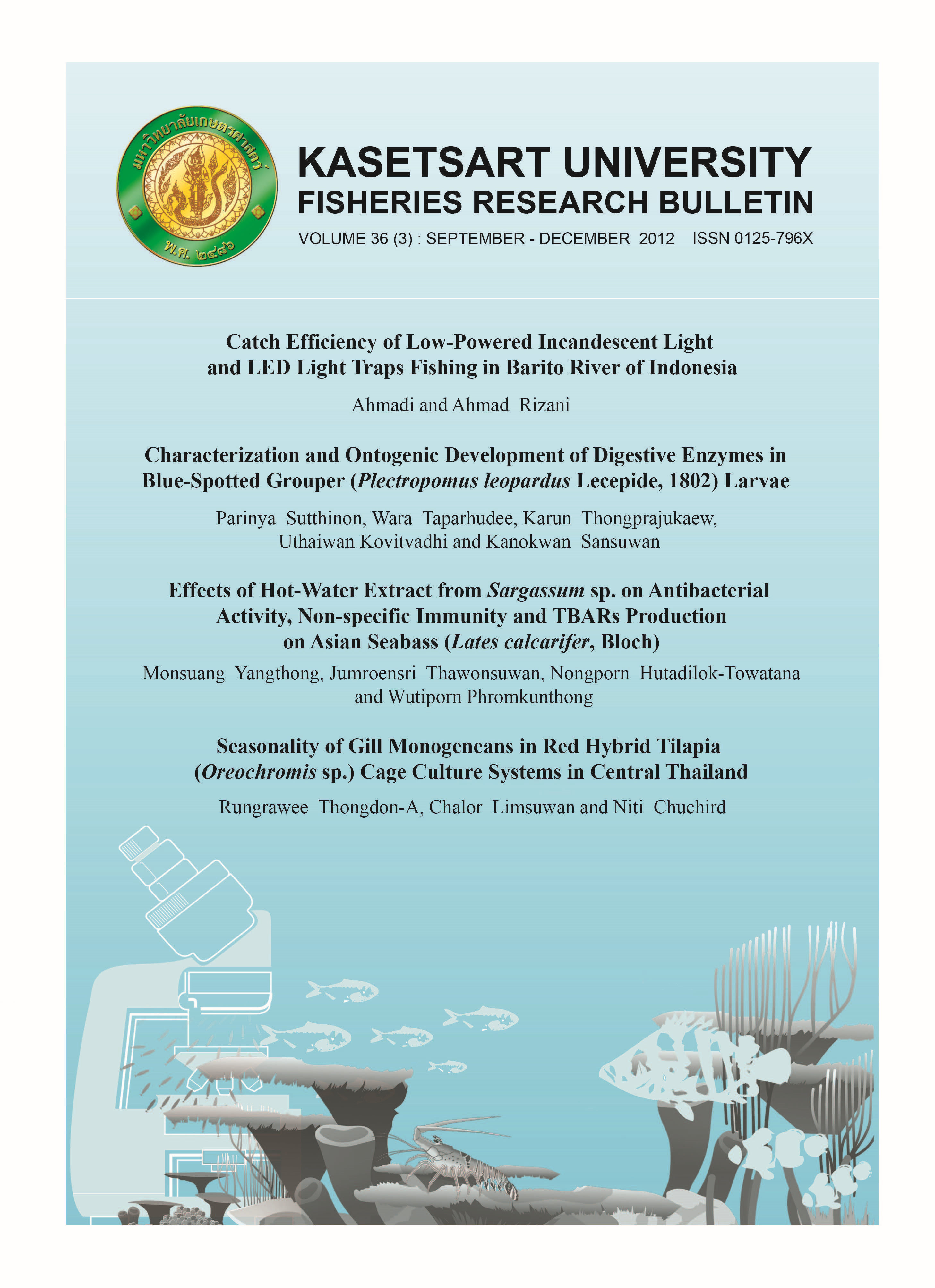Seasonality of Gill Monogeneans in Red Hybrid Tilapia (Oreochromis sp.) Cage Culture Systems in Central Thailand
Main Article Content
Abstract
A seasonal study of monogenean gill parasites in the cage culture of red hybrid tilapia (Oreochromis sp.) in three fish farms was conducted between June 2010 and May 2011. The farms represented three different areas and conditions of study, namely, freshwater culture in Khwae Noi River, Kanchanaburi province (Farm A), an urban residential area (Farm B), and brackish water culture (Farm C). Farms B and C are located in Samut Songkhram province. During the study period, water quality was kept within acceptable ranges. This study investigated the occurrence of five gill monogenean species. Cichlidogyrus sclerosus was the most dominant parasite followed by C. tubicirrus, C.thurstonae, Scutogyrus longicornis and C.tilapiae. The highest prevalence and mean intensity of these parasitesin red hybrid tilapia cultured in cages occurredin Farm B followed by Farm A then Farm C. The gill parasites showed a 100% prevalence and the highest mean intensity in April at all study sites. The results showed that majority of the fish sampled had higher infestations by gill monogenean parasites during the dry season.


